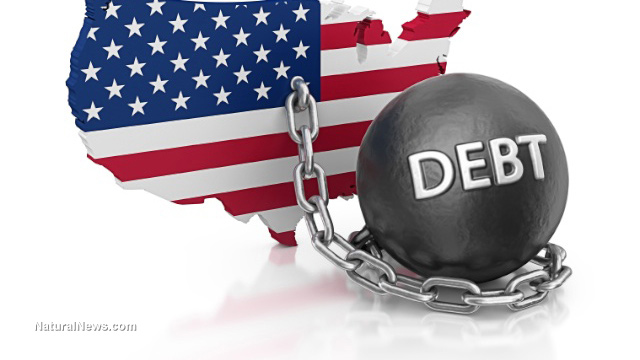 Parler
Parler Gab
Gab
Elementary economic forces — too much supply and not enough demand — have collided to create the worst stretch for U.S. government bonds since the Civil War. The government keeps borrowing to cover its budget deficits, while once-reliable buyers of that debt, both at home and abroad, have pulled back. The result: Investors are demanding the steepest yields since 2007. Auctions of fresh bonds that were once routine are now going terribly. And bond portfolios are getting absolutely hammered. The longest-dated Treasury bonds are in a bear market worse than the dot-com bust and almost as bad as 2008.A bond crash normally precedes a stock market crash. That is exactly what happened in 2008, and it appears that the same pattern is being reproduced now. So if you have a lot of money in the stock market, you may want to brace yourself for what is ahead. In the past, we could always rely on China, Japan and other foreign buyers to keep the party going, but now they are not very interested in our bonds…
China and Japan, once reliable buyers of Treasury bonds, have been selling them to prop up their weakening currencies. A decade ago they held more than 22% of U.S. government bonds; today it’s 7%. The Ukraine war has dampened demand among Eastern European buyers, said Steve Ricchiuto, the chief U.S. economist at Mizuho. Increasing U.S. oil production means fewer petrodollars in the Middle East to be reinvested through the Treasury market. U.S. banks, too, are stepping back.I certainly can’t blame our banks for “stepping back” from buying more bonds. Thanks to the dramatic shift in interest rates that we have witnessed, they are sitting on hundreds of billions of dollars in unrealized losses. So who is going to buy our debt in 2024 and beyond? That is a very good question. And servicing the debt that we have already accumulated is becoming a major problem. During the last year, the federal government “had to spend one-fifth of all the money it collected just on debt interest”…
The U.S. federal government has borrowed so much money that, over the past year, it has had to spend one-fifth of all the money it collected just on debt interest—which came to almost $880 billion. Americans paid some $450 billion less in income taxes for the year, trapping the government in the pincers of a fiscal crunch. The country teeters on the brink of a debt spiral that could devolve into a fiscal crisis or hyperinflation, several economists told The Epoch Times. “The problem is serious because, any way you cut it, taxpayers are paying interest on the mountain of debt that has been accumulated,” said Steve Hanke, a professor of applied economics at Johns Hopkins University. “In short, they are paying something for nothing.”In 2024, the U.S. government will spend well over a trillion dollars just in interest on the national debt. That wasn’t supposed to happen until 2030. A day of reckoning has arrived, and it is just a matter of time before the entire system comes crashing down like a house of cards. This isn’t going to be just another “financial crisis”. As James Rickards has aptly noted, what we will soon experience will be “qualitatively different” from anything that we have ever experienced before…
The next financial crisis will not be merely a bigger version of the 1998 and 2008 crises, it will be qualitatively different. It will encompass multiple asset classes on a global scale. It will exhibit inflation not seen since the 1970s, insolvency not seen since the 1930s and exchange shutdowns not seen since 1914. State power will be summoned to contain panic.What Rickards is describing is a full-blown economic collapse. So what will our society look like once such a scenario unfolds? Already, economic conditions have deteriorated so dramatically that demand at local food banks has risen to “unprecedented” levels in some cities…
The demand for local food banks is on the rise as soaring prices impact average Americans under President Joe Biden. The increasing demand for food banks demonstrates how soaring inflation driven by “Bidenomics” negatively impacts lower income families. “We are seeing unprecedented demand,” Jackie DeCarlo, chief executive of Manna Food Center, told the Washington Post on Monday.If things are this bad now, what will we be facing a year or two from now? At this point, there is no escape. All our politicians can do is to keep the party going for as long as they possibly can. They knew that they were destroying our financial future, and they also knew that they couldn’t keep borrowing and spending insane amounts of money forever. Of course nobody can say that we weren’t warned. People like me have been relentlessly warning about our financial condition for years, and now I am warning about what is coming in the aftermath of the approaching financial meltdown. Our leaders tried to outrun the basic laws of economics for a long time, and for a while they were flying high. But now reality has caught up with them, and we are all going to pay a very bitter price for their crimes. Read more at: TheEconomicCollapseBlog.com
Another PROXY WAR in the works? U.S. shaping the Philippines into the next Ukraine
By Ramon Tomey // Share
By Arsenio Toledo // Share
Governments continue to obscure COVID-19 vaccine data amid rising concerns over excess deaths
By patricklewis // Share
Tech giant Microsoft backs EXTINCTION with its support of carbon capture programs
By ramontomeydw // Share
Germany to resume arms exports to Israel despite repeated ceasefire violations
By isabelle // Share










